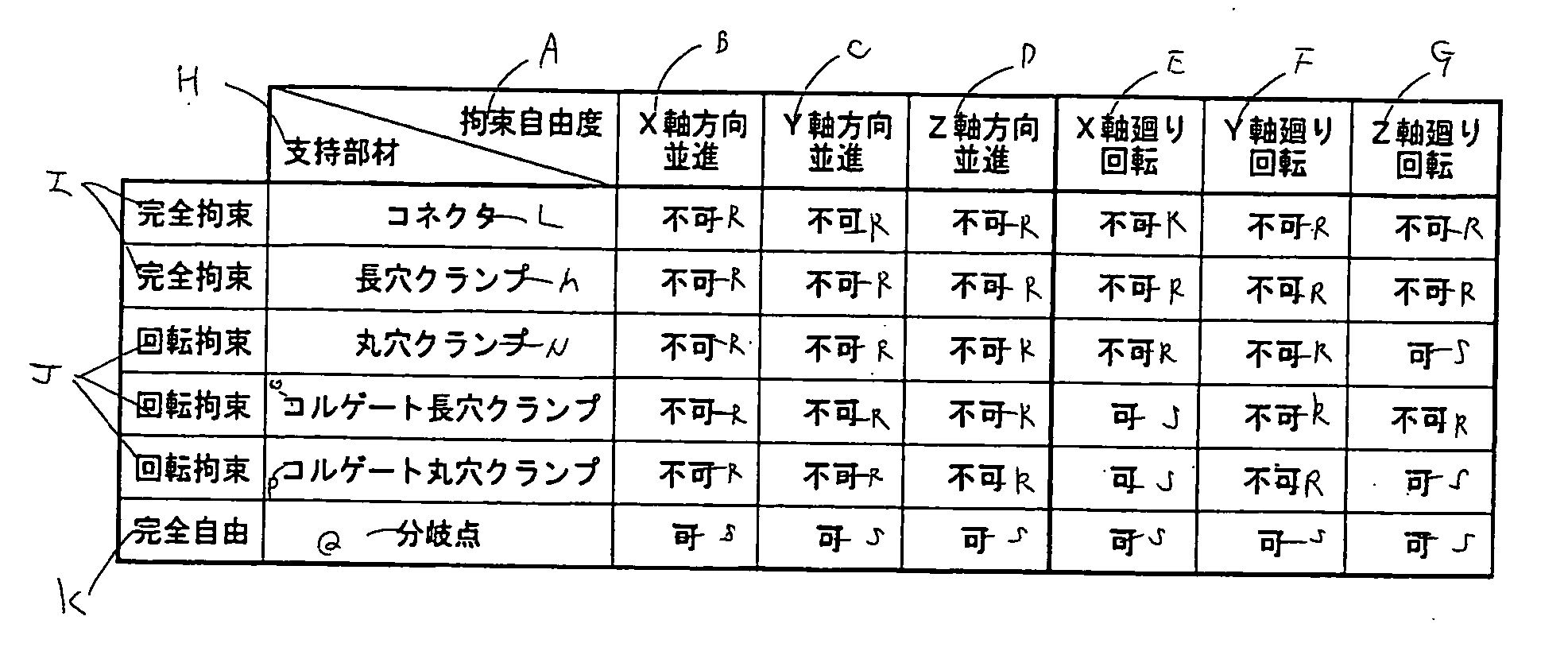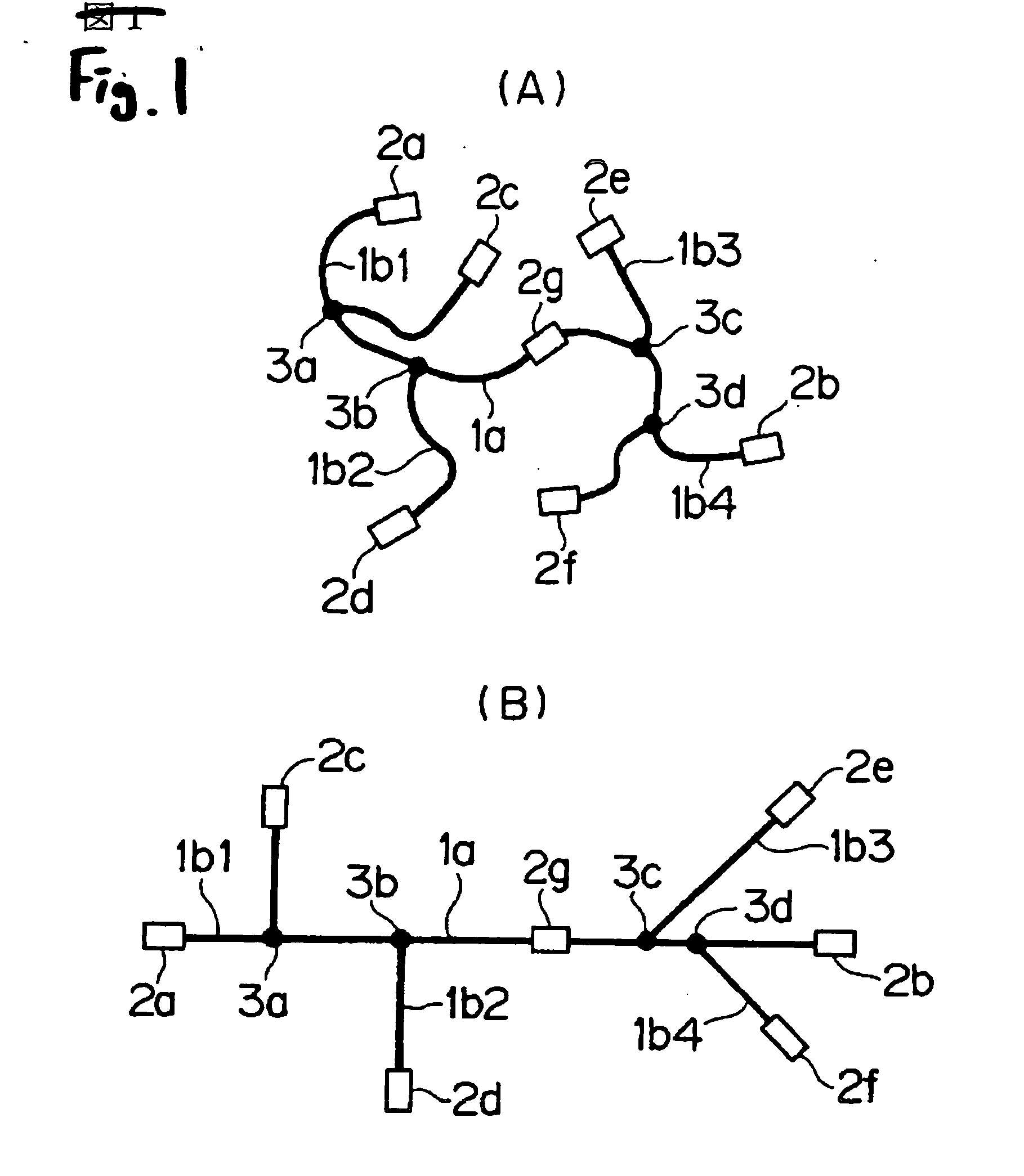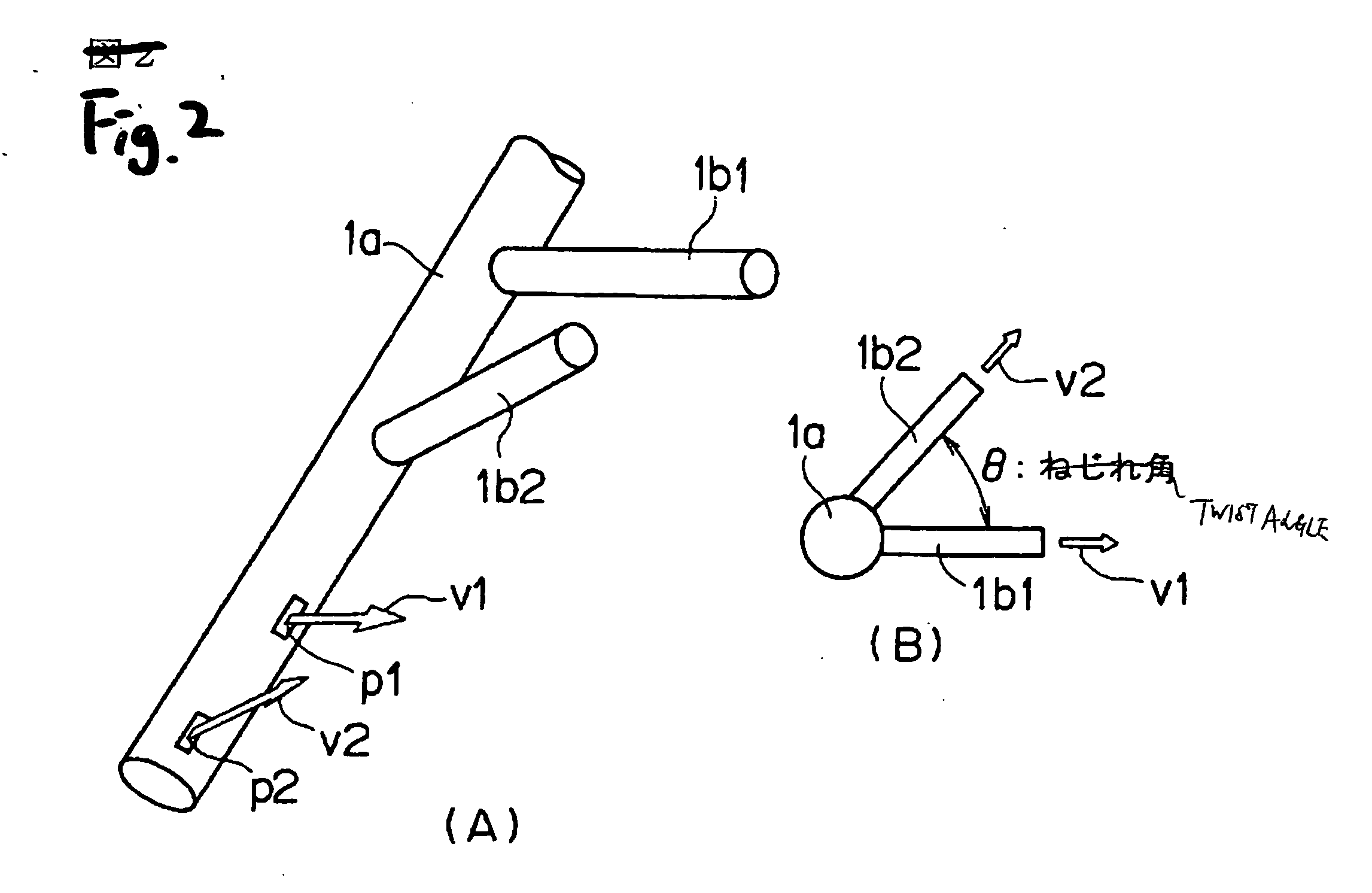Wire-like structure torsion angle calculating method, and device and program therefor
- Summary
- Abstract
- Description
- Claims
- Application Information
AI Technical Summary
Benefits of technology
Problems solved by technology
Method used
Image
Examples
first embodiment
[0209] [First Embodiment]
[0210]FIG. 10 is a flowchart showing a process procedure in the first embodiment of the invention, and FIGS. 11(A) to 11(C) are flowcharts respectively showing subroutines in the process procedure of FIG. 10. FIGS. 12(A) to 12(E) are views exemplarily showing states in the process of FIG. 10, and FIG. 13 is a view illustrating the process of FIG. 11(C). The objective wire harness may be a wire harness which has no branch, and to which a clamp(s) is attached, one which has a branch(es), and to which no clamp is attached, or one which has a branch(es), and to which a clamp(s) is attached. FIG. 12 shows, as a typical example, a wire harness which has no branch, and to which clamps are attached.
[0211] First, in step S1 of FIG. 10, a deformed shape is designed, and the designed deformed shape is output to the display device 43. The deformed shape is a wire harness 1′ the shape of which is designed as shown in FIG. 12(A) so that the wire harness is laid in a pred...
second embodiment
[0225] [Second Embodiment]
[0226]FIG. 14 is a flowchart showing a process procedure in a second embodiment of the invention. FIGS. 15(A) to 15(D) are views exemplarily showing states in the process of FIG. 14, respectively.
[0227] First, in step S201 of FIG. 14, a deformed shape such as shown in FIG. 15(A) is designed in the same manner as step S1 of FIG. 10, and the designed deformed shape is output to the display device 43. In the embodiment, a wire harness 1″ is assumed which includes a trunk wire 11a and branch wires 11b1 to 11b5 that branch off from the trunk wire 11a. It is a matter of course that, in the same manner as the first embodiment, a clamp may be attached to an intermediate portion of the trunk wire 11a. For example, the wire harness 1″ includes the trunk wire 11a, and a plurality of branch wires 11b1 to 11b5 which branch off from the trunk wire 11a in different directions. Clamps 21a to 21g are attached to end portions of the trunk wire 11a and the branch wires 11b1 ...
third embodiment
[0238] [Third Embodiment]
[0239]FIG. 16 is a flowchart showing a process procedure in a third embodiment of the invention, and FIGS. 17 to 19 are views exemplarily showing states in the process of FIG. 16, respectively. The third embodiment is configured by expanding the concept of the first embodiment so as to, in a wire harness having a branch wire which branches off from a trunk wire, or that in which a clamp is further attached to a branch wire, obtain twist angles of the branch wire and the clamp.
[0240] First, in step S301 of FIG. 16, a deformed shape is designed, and the designed deformed shape is output to the display device 43. The deformed shape 100B is a wire harness 100 the shape of which is designed as shown in FIG. 17 so that the wire harness is laid in a predetermined portion such as a door of a vehicle or a floor. For example, the wire harness 100 includes: a trunk wire 100a; branch wires 100b1, 100b2, 100b3 which branch off from the trunk wire 100a; and clamps 200a t...
PUM
 Login to View More
Login to View More Abstract
Description
Claims
Application Information
 Login to View More
Login to View More - R&D
- Intellectual Property
- Life Sciences
- Materials
- Tech Scout
- Unparalleled Data Quality
- Higher Quality Content
- 60% Fewer Hallucinations
Browse by: Latest US Patents, China's latest patents, Technical Efficacy Thesaurus, Application Domain, Technology Topic, Popular Technical Reports.
© 2025 PatSnap. All rights reserved.Legal|Privacy policy|Modern Slavery Act Transparency Statement|Sitemap|About US| Contact US: help@patsnap.com



